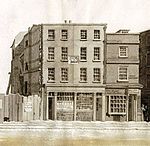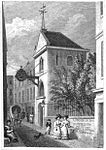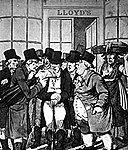Candlewick

Candlewick is a small ward, one of the 25 ancient wards in the City of London. Its northern boundary runs along Lombard Street — to the north is the ward of Langbourn. Gracechurch Street forms Candlewick's eastern boundary with Bridge ward, down to the Monument to the Great Fire of London, erected to commemorate the place where the Great Fire abated. Its southern boundary curves along Arthur Street, incorporating traffic from London Bridge to its western edge along Laurence Pountney Lane, Sherbourne Lane and Abchurch Lane in Walbrook ward. There are two churches within Candlewick, St. Mary Abchurch on Abchurch Lane and St. Clement Eastcheap on Clement's Lane, while a third, St. Michael, Crooked Lane, was demolished in 1831 to make way for the new London Bridge. There are several large stores and pubs and a hotel located in the ward. As with many City wards it has its own social club and newsletter.Monument tube station is located in the south-eastern corner of the ward.
Excerpt from the Wikipedia article Candlewick (License: CC BY-SA 3.0, Authors, Images).Candlewick
Clements Lane, City of London
Geographical coordinates (GPS) Address Nearby Places Show on map
Geographical coordinates (GPS)
| Latitude | Longitude |
|---|---|
| N 51.5114 ° | E -0.086829 ° |
Address
St Clements Church
Clements Lane
EC4N 7HR City of London
England, United Kingdom
Open on Google Maps










